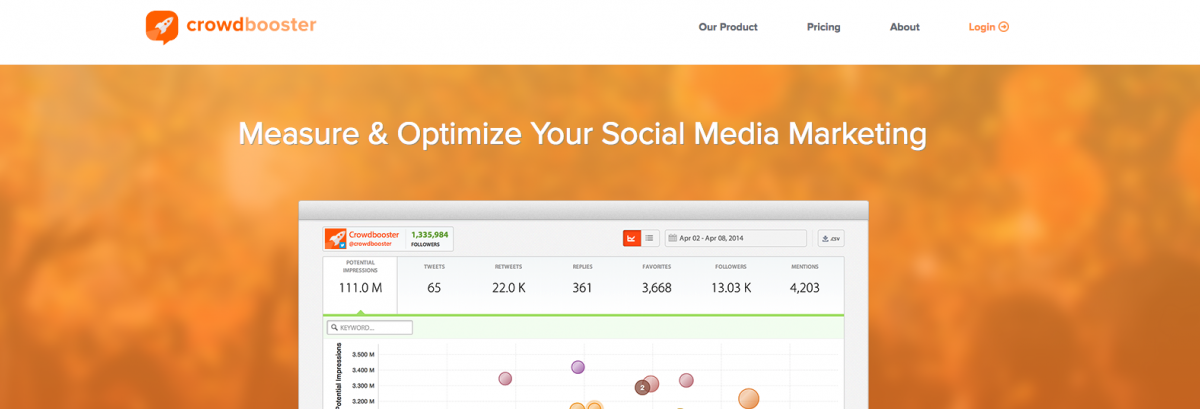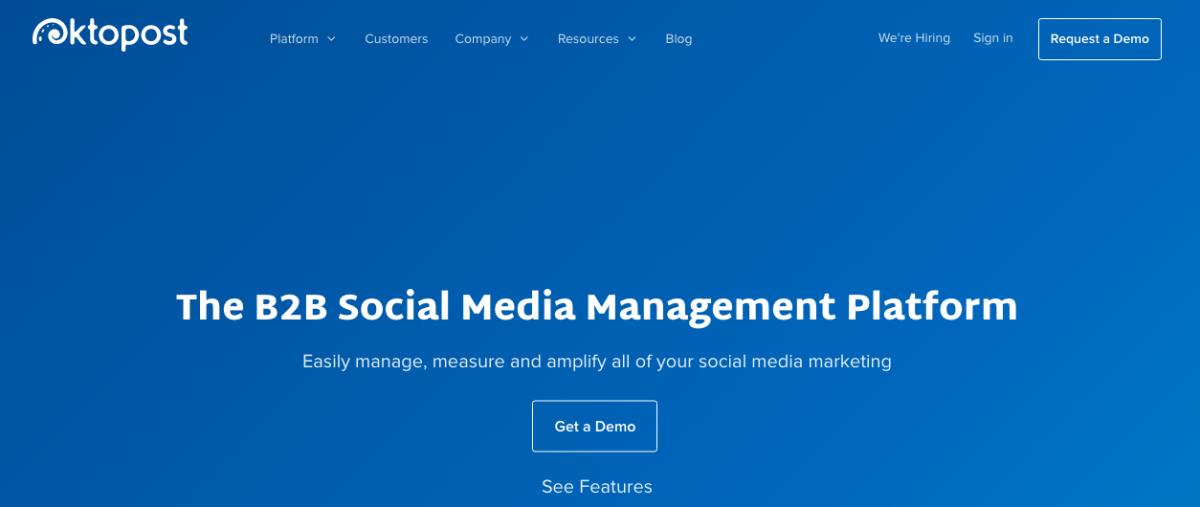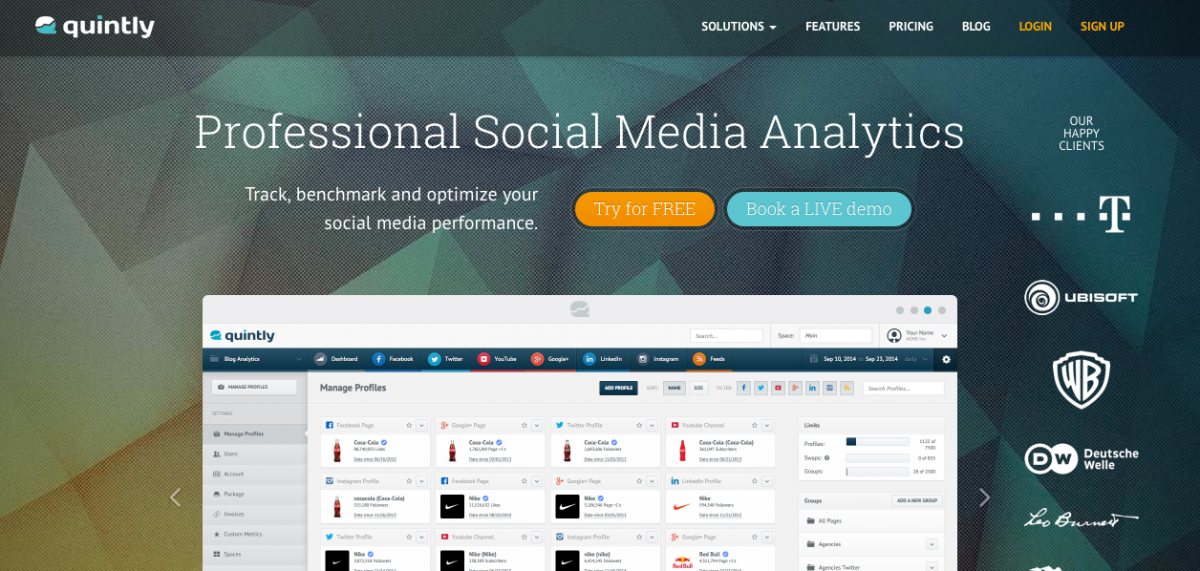How to Brand Your Real Estate Business on Social Media
As a new real estate agent, a strong social media presence is critical to effectively branding yourself and your business. If you think it’s not worth it, we ask you reconsider.
A study performed by economists at New York University, Harvard and Facebook found decisions about buying property are greatly influenced by social media networks. Yet, only 9 percent of realtors use social media to market their listings and forge relationships directly with potential customers.
While traditional marketing avenues are not to be abandoned, social media is a free tool that can be used to extend your reach and generate more leads, but only if you have a solid presence.
10 Ways to Strengthen Your Real Estate Brand on Social Media
Many real estate agents new to social media aren’t aware of the nuances and rules governing social media and, as a result, fail to develop and groom prospects from their social media platforms—all too often they wonder why. You are a brand, and how you present yourself on social media matters a great deal.
Here are some easy ways to give your brand a boost:
1. You are what you share
What you post on social media becomes a representation of you and your business. Before you post, ask yourself whether it is on brand or clearly gets your core message across.
Tip: Share posts about your industry—what’s changing in the landscape, for instance—and about projects you’ve worked on, are currently working on, or have in the works. Also, with every post be sure that an image or video compliments it. Posts with images or videos get more clicks and are shared more often.
2. Personal touches
It is true more and more consumers want a personal connection to their brands and businesses, and since you are a brand and you are a business, they want to establish a relationship with you. But there is a way to get personal without sharing too much of yourself.
Tip: A winning post that has personal touches may sound like this: “Congratulations, Linda and Ed! I’m happy I was able to make your home buying dream come true.” Add a picture of them in front of the home, and you’ve done it.
This tells potential home buyers that you have happy home buyers and care about their experience; that every client means something to you, it wasn’t just a monetary venture.
3. Choose a name or handle that easily identifies you and your business
@PartyTimeKev is great, if you are a club promoter. Otherwise, such a name or handle could be of detriment to you and your brand. Therefore, choose a name or handle that easily identifies you and your business. So, you might say Kevin Brown Realty, or something of the sort. This clearly states your name and what you do, which is the concept.
Tip: Keep your handles consistent across social media platforms—if you use Twitter, Facebook and Instagram, have the same name for each platform so customers will be able to easily identify they’re looking at the right company, and your brand will feel much more cohesive.
There are also SEO benefits to making your social media handle the same name as your business: when a customer searches for you they will ideally see a search results page with your website and each of your social media profiles.
4. Interview for the job
Think of the “About You” tab as your resume. It should state things about your work/professional background, what certification or education you have that makes you an authority in your field, how long you’ve been in your industry, why you are passionate about real estate, how many homes you’ve sold, and who your target home buyer is.
Tip: On Twitter, this is an opportunity to insert identifying hashtags—tags such as #realestate, #realtor, #homebuying, and #buyingtips not only show your followers what you’re all about, but they also help surface your account when Twitter users search for companies with those hashtags.
5. Make a great first impression
First impressions are everything. Choose a professional photo that clearly signals which industry you are in and gives potential clients an idea of how you might appear or present yourself should you meet in person.
6. Be engaged
The purpose of building a strong social media brand is to nurture existing relationships and build new ones. Engage with followers by liking and reposting posts of theirs you like. Comment if you feel inclined, but make sure any opinions reflect the stance of your business as a whole.
7. Don’t oversell
You want to make money, but that shouldn’t be the focus of the majority of your posts. Consumers no longer respond to hard-pressure sales. Overselling your business can do the opposite of what you actually intend: to sell and draw in leads.
Tip: Abide by the 80/20 rule: 80 percent informative (e.g. how-to articles, home repair tips, ways to save for a home, or info about local events/restaurants in your territory) and 20 percent about your services. By doing this, you let your audience know you are a thought leader and in this way, you gently nudge them toward choosing you as their agent.
8. Be consistent
Consumers now look at a brand in its entirety, scanning across all digital platforms they are tied to. This is why it helps to keep your message and brand consistent across all your social media platforms.
9. Be grammatically correct
Before you post anything with text--be it your caption or the article you wish to reference--make sure you check your spelling and punctuation. A misspelling could tell your audience you make oversights.
10. Ask and you shall receive
Consumers want to be active participants, and one way you can get them involved is by asking them questions and allowing them to share. What’s your favorite exterior design trend? When purchasing a home, do sustainable materials matter? These are some inquiries that beg them to engage.
7 Low-Cost Social Media Analytics Tools For The New Real Estate Agent
The best way to measure the effectiveness of your brand on social media is through analytics tools. There are a number that are free to low-cost, and they will help you understand whether you’re headed in the right direction, or whether you need to readjust your strategy.
Focus on your key performance indicators (KPIs)--number of likes and shares your posts receive, number of comments and replies, number of clicks your links and content garner, and conversion rates--but give particular attention to your demographics (e.g. age, gender, interests and geographical location) as this will help you better tailor content toward your target audience.
1. Keyhole

Keyhole is a social media analytics tool that offers precise details about how your brand is performing on Instagram, Facebook, and Twitter--all under a shareable dashboard. You can track keyword, hashtag and campaign metrics in real-time, including your impressions, reach, periods of high activity, and more. But here’s the cool part: You can boost your engagement by using the dashboard’s Influencers tab, which helps you point out accounts that have the highest reach and interaction numbers. Try to re-share their most popular content.
2. Google Analytics

Google Analytics is the easiest starting point; it’s great at analyzing website traffic and gives you insight to certain social media metrics. Measure the traffic coming from your social media sites and determine how visitors interact with your content. You can also determine whether your social media platforms are leading to conversions. Try using urchin tracking module (UTM) parameters. When you add these tags to a URL, when someone clicks on it, the tags are sent back to Google Analytics for tracking. You can then get necessary details on the person who clicked your link. Follow the person, then periodically send them content that speaks to their interests.
3. Crowdbooster

If you are looking for something more tangible, Crowdbooster allows you to export real-time engagement data to Excel. Using a customizable and perceptive dashboard, you also get suggestions via a weekly performance summary about who to engage, when to post, and how to increase your interaction efforts.
4. Klout

Were you motivated by grades when you were in school? If so, this may be the perfect tool for you. Klout grades you (out of 100) based on your ability to engage and drive action. See which of your social media platforms you dominate, then readjust your tactics on those that are poorer performing.
5. Oktopost

Though this tool can run you at least $65 per month, it could be well worth it if you have a strong social media brand. Oktopost identifies channels and messages that drive financial actions on your website, allowing you to say, with certainty, “this new customer came from X, Y, or Z.” Additionally, you can manage all your social marketing activities, schedule content for distribution in advance, and measure the results for clicks, conversions and post engagement.
6. Quintly

In the real estate market, competition is the name of the game. Quintly lets you benchmark your numbers against competitors, giving you a visual on standard engagement metrics via graphs.
7. Dashboards from the Social Networks
Facebook, Twitter, LinkedIn, Instagram, and Pinterest all have their own built-in analytics that show you how people engage with your platforms and website and allow you to comb through customer data (e.g. with demographics, retention and conversion reports). You also get insight on your followers, click rates, engagement rates, etc.
Building and maintaining a strong social media presence is time-consuming, especially when you are juggling multiple platforms and at the same time trying to run a business. For assistance, contact us. We offer time-saving marketing automation services that can help drive your social media campaign to new levels of success.

